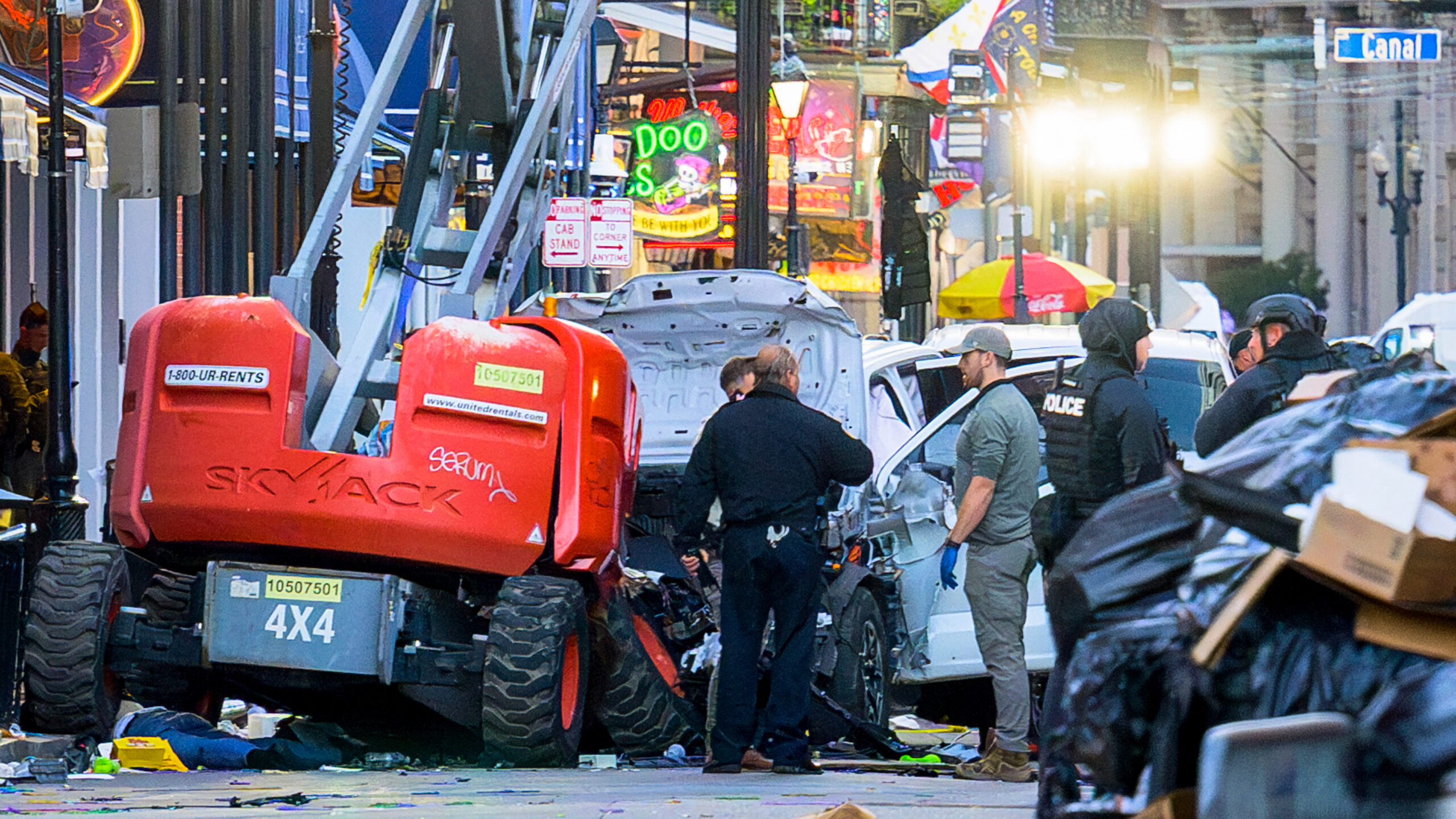
The Issue
Despite the recent attack in New Orleans, longer-term trends suggest that jihadist terrorism in the United States is not resurgent. The number of jihadist plots and attacks in the United States has been low since the territorial defeat of ISIS. The average lethality of jihadist terrorist attacks has also fallen since the peak of the caliphate. International groups such as the Islamic State and al Qaeda have filled more of an inspirational role rather than directly orchestrating attacks on the United States. Although formal links between attackers and plotters in the United States appear to be rare, this has not prevented individuals from carrying out lethal “lone wolf” attacks. Overall, jihadist terrorism in the United States does not merit additional resources at this time; however, international terrorism organizations continue to merit counterterrorism efforts.
Introduction
In the early morning hours of New Year’s Day 2025, a U.S. citizen from Texas named Shamsud-Din Jabbar drove a truck into a crowd of people on Bourbon Street in New Orleans, killing 14 people.1Jabbar was inspired by the Islamic State, making the incident the deadliest jihadist attack in the United States since the 2016 Pulse nightclub shooting in Orlando, Florida.2To better understand attacks like Jabbar’s, CSIS compiled a dataset of 740 terrorist attacks and plots in the United States between January 1, 1994, and January 1, 2025, 140 of which were jihadist attacks and plots.3
Analysis of the jihadist attacks yields three main findings. First, the frequency of recorded jihadist attacks and plots against targets in the United States has been low since the territorial defeat of the Islamic State in 2019. Between the beginning of 2020 and New Year’s Day 2025, CSIS counted 8 jihadist attacks and 10 disrupted plots—an average of about 3 attacks or plots per year. Between 2013 and 2019, jihadists conducted 27 attacks, and 46 jihadist plots were disrupted—an average of about 10 attacks or plots per year.
Second, the lethality of jihadist terrorism in the United States has fallen since the territorial defeat of the Islamic State. This decline is likely the result of a decrease in the Islamic State’s ability to inspire violence rather than a loss of operational support from international terrorist organizations, as direct Islamic State support for attacks in the United States was lacking before 2019. U.S. terrorists have proved lethal even without support from international terrorists, with facilitated attacks accounting for only about 14 percent of deaths from jihadist violence in the last 20 years.
Third, international terrorist organizations have inspired, not directed, jihadist terrorism in the United States, though their potential to facilitate mass-casualty attacks makes them a serious threat. U.S. attacks facilitated by international terrorist groups have been no more lethal than those not facilitated by international groups since 9/11. But these groups have successfully facilitated mass-casualty attacks in Europe, and the United States has experienced several near misses since 9/11.
Taken together, these findings suggest that jihadist terrorism in the United States does not merit additional special attention from policymakers or law enforcement beyond the high levels it already receives, but international jihadist organizations do merit continued counterterrorism efforts.
Defining Terrorism and Building the Dataset
This analysis focuses on terrorism, defined here as the deliberate use or threat of premeditated violence by nonstate actors with the intent to achieve political goals by creating a broad psychological impact of fear or intimidation.4For inclusion in the dataset, events had to meet all parts of this definition.
This brief examines the threat posed by jihadist terrorism, specifically terrorism motivated by variations on the Salafi-jihadist ideology espoused by the Islamic State and al Qaeda. Salafi-jihadists seek to violently revive a version of Islam they believe was practiced in the early years of the religion.5They believe they have a religious obligation to participate in violence in what they see as a defense of Islam, and they exhibit an extremely expansive understanding of who constitutes a valid target.6Many also reject democracy or even the modern state system as un-Islamic, favoring its replacement with a regional or global Islamic state.7U.S. jihadists vary in their theological knowledge, and many have only minimal understanding of the ideological tradition they claim to follow.8For this study, when an attacker expressed solidarity or sympathy for at least one jihadist group or the global Salafi-jihadist movement, the authors coded the incident as an act of jihadist terrorism.
Using this definition, CSIS compiled and analyzed a dataset of terrorist attacks and plots in the United States. The dataset includes information such as incident date, location, target and location type, weapon used, and fatalities, as well as the perpetrator’s age, sex, ideology, group affiliation, and current or former affiliation with the military or law enforcement. For the purposes of this brief, four new variables were added: direct contact with an international terrorist organization, type of support given by the international terrorist organization, foreign fighter status, and whether the assailant acted alone or with a group. The full methodology and a codebook for the dataset, excluding the four new variables, are linked at the end of this brief.
Jihadist Terrorism in the United States
Between the beginning of 1994 and the beginning of 2025, jihadists conducted or plotted 140 reported attacks in the United States. This type of attack has undergone two main spikes since 9/11. The first occurred in the early years of Barack Obama’s presidency, and the second between the declaration of the Islamic State’s caliphate in 2014 and the fall of its last territorial holding in 2019 (Figure 1). Most jihadist attacks and plots have targeted civilians, though both these periods of increased jihadist activity saw significant numbers of attacks and plots against military, government, and law enforcement targets.



